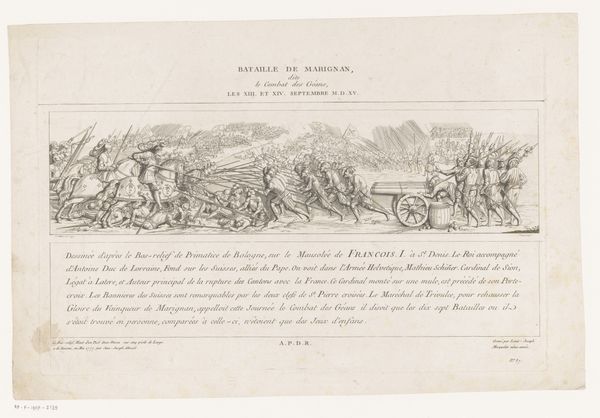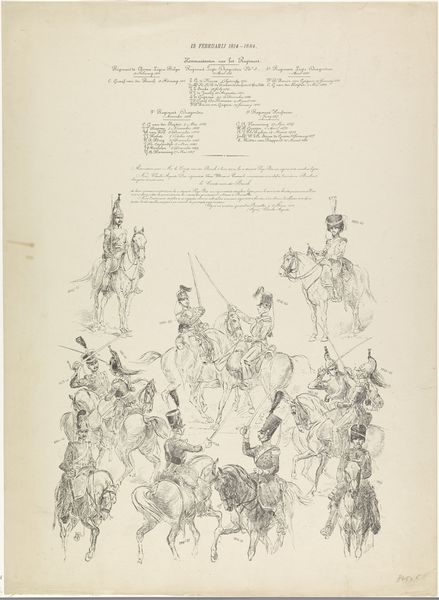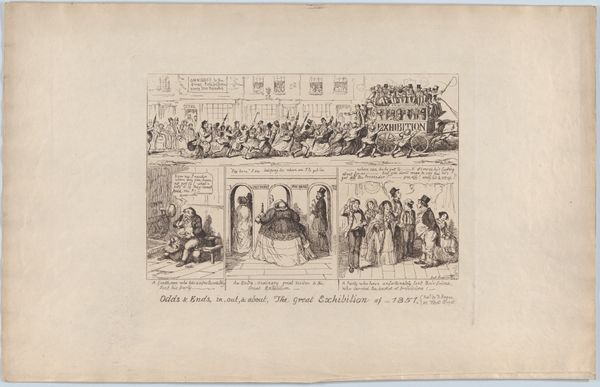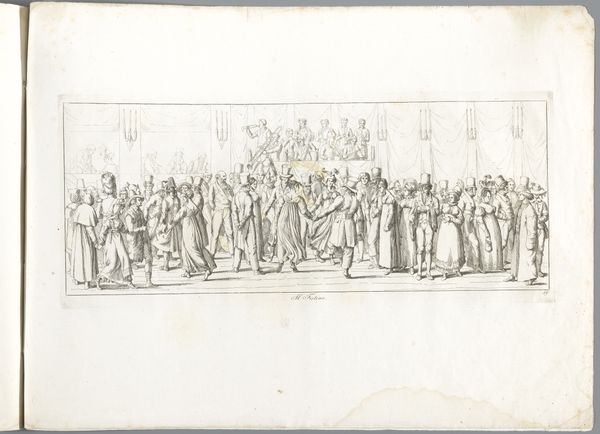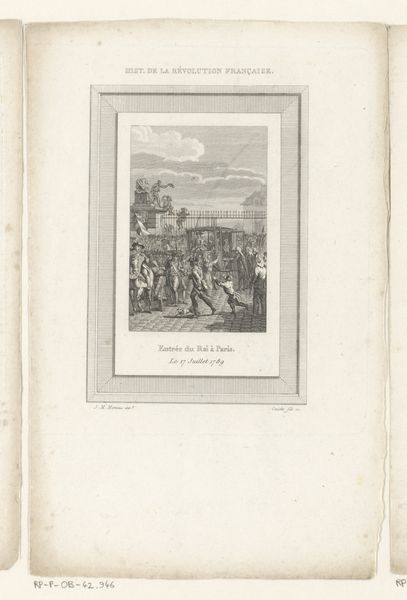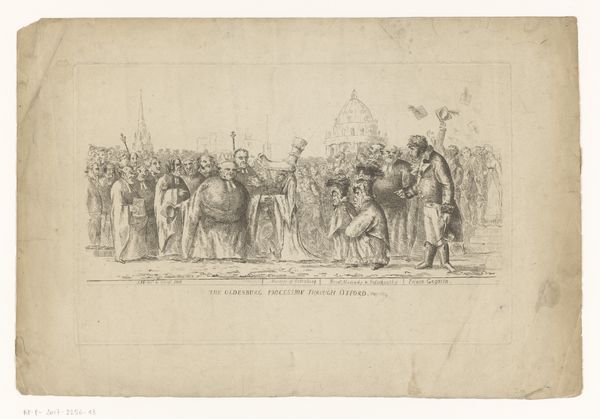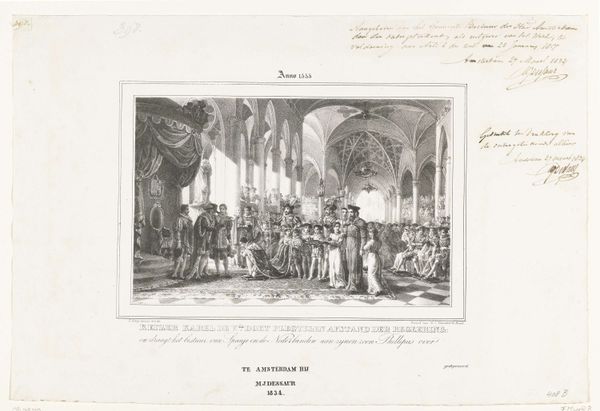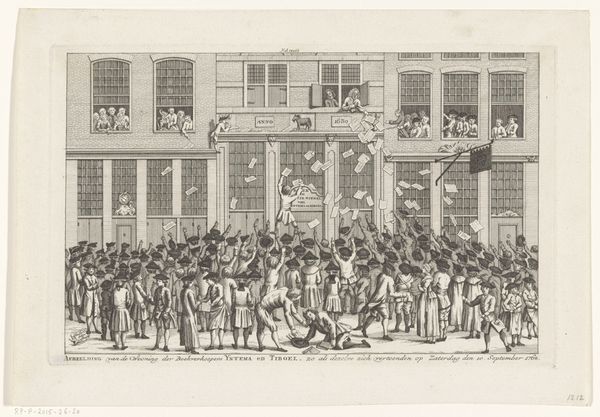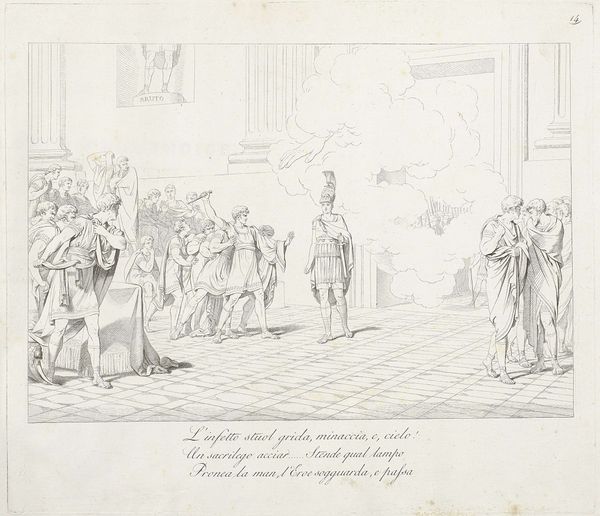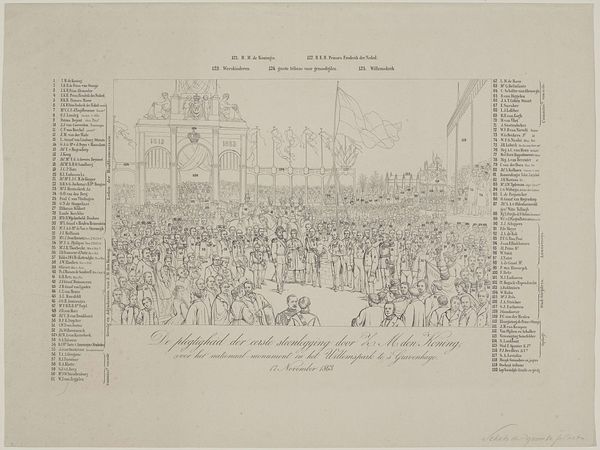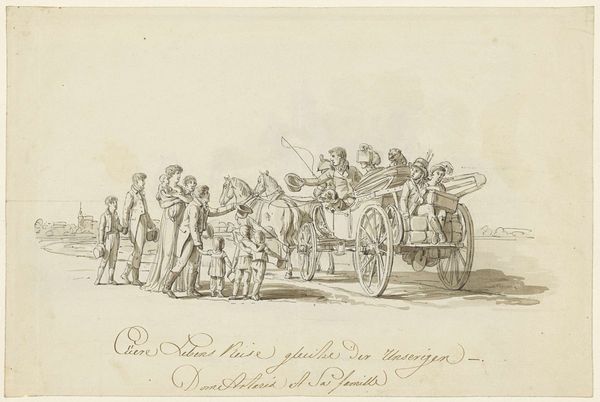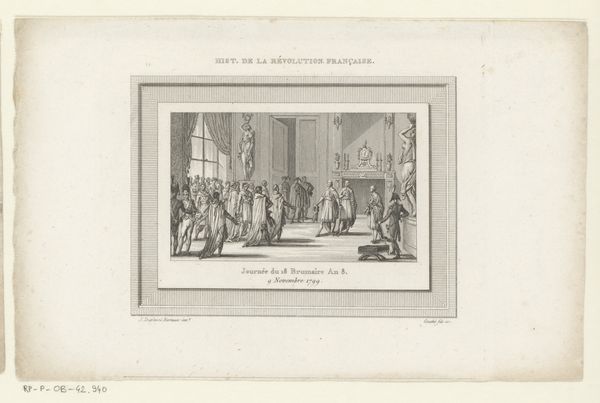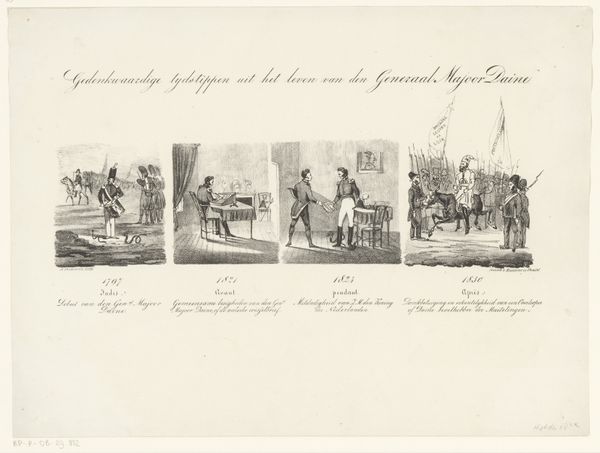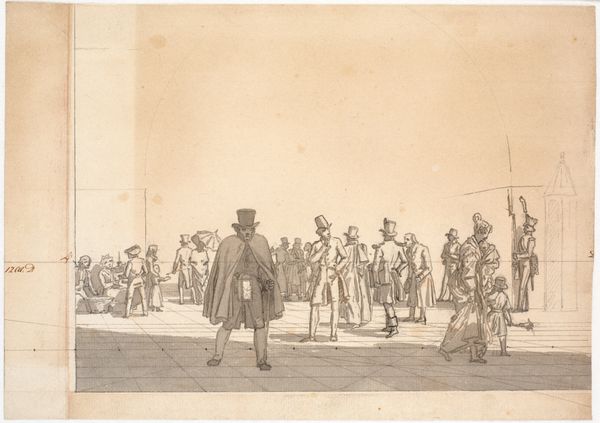
Key with List of Performers and Audience to: The Beggars Opera 1790
0:00
0:00
drawing, print, engraving
#
portrait
#
drawing
# print
#
pen-ink sketch
#
15_18th-century
#
genre-painting
#
history-painting
#
engraving
Dimensions: Sheet: 5 13/16 x 8 11/16 in. (14.7 x 22 cm)
Copyright: Public Domain
Curator: This delicate pen-and-ink sketch is titled “Key with List of Performers and Audience to: The Beggar’s Opera,” created around 1790, after the original performance of 1727. Editor: My first impression is that the artist clearly valued the scene’s satirical nature! Look at the exaggerated postures and slightly absurd formality of everyone involved. It really hints at the themes without having to dive deep. Curator: Indeed! It presents a visual record of the characters from John Gay's popular ballad opera. You have numbered figures, each corresponding to a list of both the performers and the prominent members of the audience below the stage image. Hogarth offers us a fascinating glimpse into 18th-century society. Editor: Precisely. We can discern the hierarchies reflected even in theatre-going; note the 'Audience' member Duke of Bolton seated in what must be a highly prized viewing position. Also, this work strikes me as quite different from more classical depictions. There's almost an immediacy in this almost proto-reportorial composition of the time, which would have communicated more, perhaps, in ways familiar to how people recognize themselves on the street rather than high artistic ideals. Curator: Absolutely. The print is particularly insightful when considered beyond pure aesthetics; the actors and viewers almost bleed into one another in terms of attire and pose. This compositional blending underlines how Gay's play satirized the aristocracy by depicting criminals as heroes and the upper class as equally corrupt. Editor: You have mentioned how Hogarth cleverly uses lines and form to convey the interconnectedness of the stage and the audience reflecting Gay’s social critique; It demonstrates a sophisticated understanding of visual language as social commentary. We are almost like cultural detectives here, analyzing visual evidence from centuries ago. It allows a really potent insight into the symbolic significance of even their seated positions relative to each other in this setting. Curator: I agree entirely. It serves as a remarkable illustration of the complexities and inherent ironies within 18th-century British society, offering a tangible connection to the period through the semiotic shorthand of art. Editor: This engraving offers much more than just an illustration; it really acts as a vibrant social document that opens the history of symbols. It compels us to ponder how cultural norms and symbolic representation mold our understanding of historical society.
Comments
No comments
Be the first to comment and join the conversation on the ultimate creative platform.
